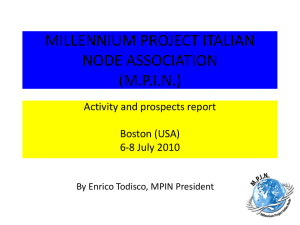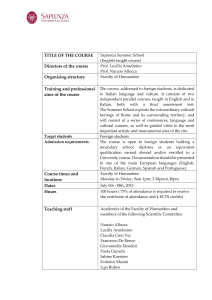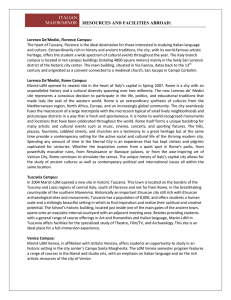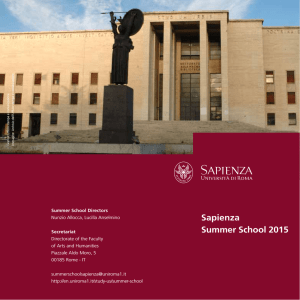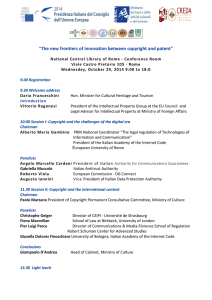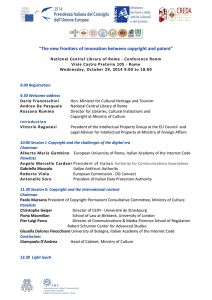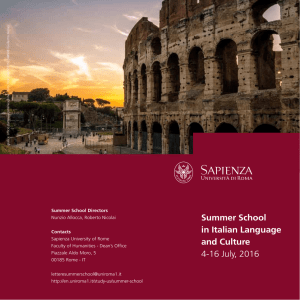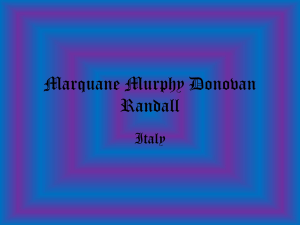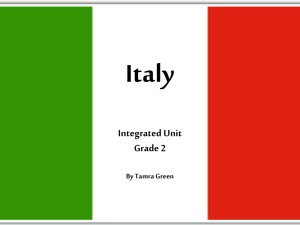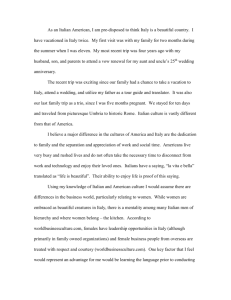interview - Elegant Etruria
advertisement
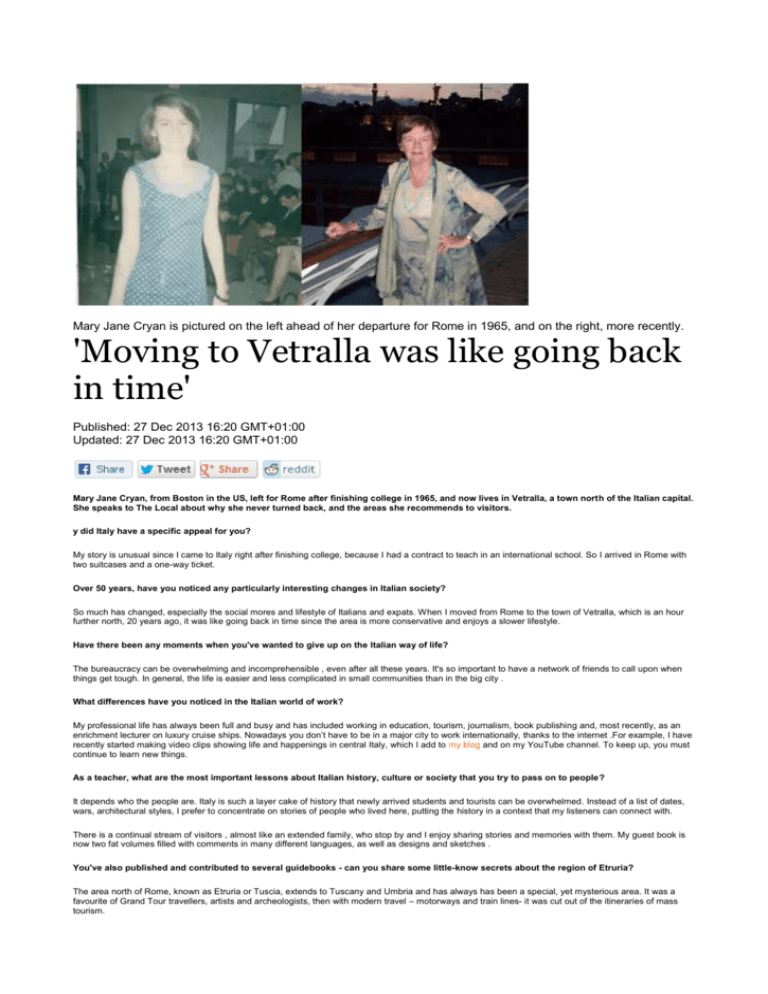
Mary Jane Cryan is pictured on the left ahead of her departure for Rome in 1965, and on the right, more recently. 'Moving to Vetralla was like going back in time' Published: 27 Dec 2013 16:20 GMT+01:00 Updated: 27 Dec 2013 16:20 GMT+01:00 Mary Jane Cryan, from Boston in the US, left for Rome after finishing college in 1965, and now lives in Vetralla, a town north of the Italian capital. She speaks to The Local about why she never turned back, and the areas she recommends to visitors. y did Italy have a specific appeal for you? My story is unusual since I came to Italy right after finishing college, because I had a contract to teach in an international school. So I arrived in Rome with two suitcases and a one-way ticket. Over 50 years, have you noticed any particularly interesting changes in Italian society? So much has changed, especially the social mores and lifestyle of Italians and expats. When I moved from Rome to the town of Vetralla, which is an hour further north, 20 years ago, it was like going back in time since the area is more conservative and enjoys a slower lifestyle. Have there been any moments when you've wanted to give up on the Italian way of life? The bureaucracy can be overwhelming and incomprehensible , even after all these years. It's so important to have a network of friends to call upon when things get tough. In general, the life is easier and less complicated in small communities than in the big city . What differences have you noticed in the Italian world of work? My professional life has always been full and busy and has included working in education, tourism, journalism, book publishing and, most recently, as an enrichment lecturer on luxury cruise ships. Nowadays you don’t have to be in a major city to work internationally, thanks to the internet .For example, I have recently started making video clips showing life and happenings in central Italy, which I add to my blog and on my YouTube channel. To keep up, you must continue to learn new things. As a teacher, what are the most important lessons about Italian history, culture or society that you try to pass on to people? It depends who the people are. Italy is such a layer cake of history that newly arrived students and tourists can be overwhelmed. Instead of a list of dates, wars, architectural styles, I prefer to concentrate on stories of people who lived here, putting the history in a context that my listeners can connect with. There is a continual stream of visitors , almost like an extended family, who stop by and I enjoy sharing stories and memories with them. My guest book is now two fat volumes filled with comments in many different languages, as well as designs and sketches . You've also published and contributed to several guidebooks - can you share some little-know secrets about the region of Etruria? The area north of Rome, known as Etruria or Tuscia, extends to Tuscany and Umbria and has always has been a special, yet mysterious area. It was a favourite of Grand Tour travellers, artists and archeologists, then with modern travel – motorways and train lines- it was cut out of the itineraries of mass tourism. In the five books I have published over the past 10 years I have tried to demystify the area. People will want to visit if they know a little more about what to expect. What is your favourite spot in the area? The historic gardens and castles (Ruspoli castle, Palazzo Farnese ,Villa Lante, Sacro Bosco and many other private castles) are in first place, followed by the archaeological sites of Tarquinia, Vulci and the newly discovered Etruscan pyramid. There is a huge variety of things to do such as places to visit and the food and wine are magnificent too. The only thing lacking are hordes of tourists
